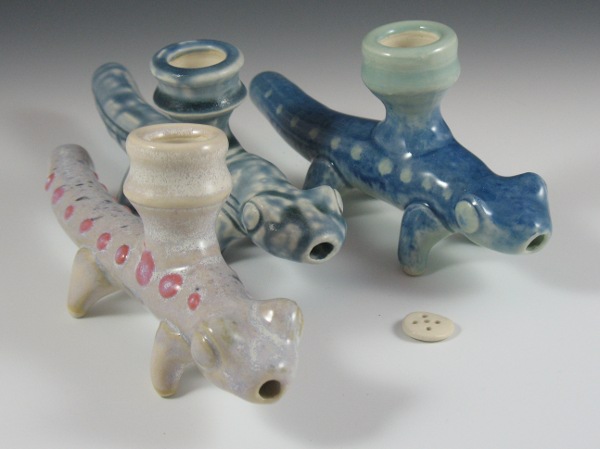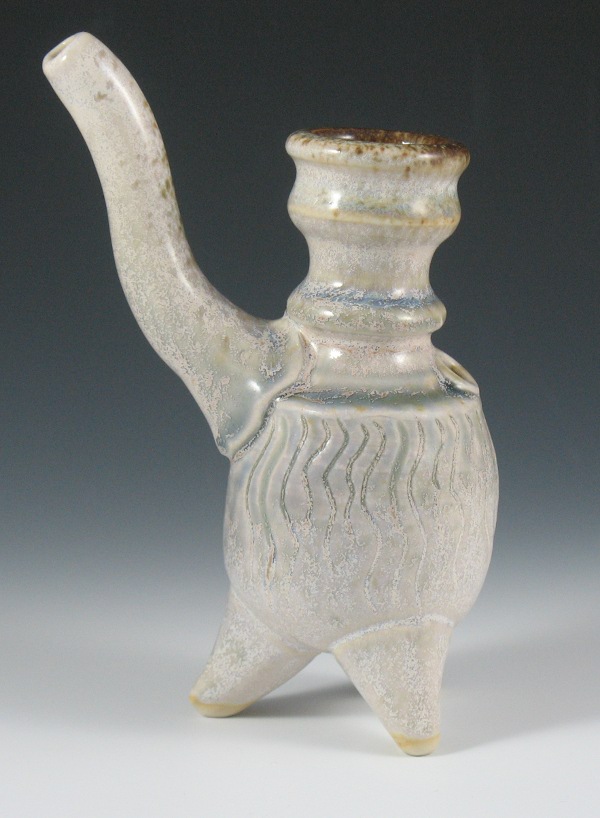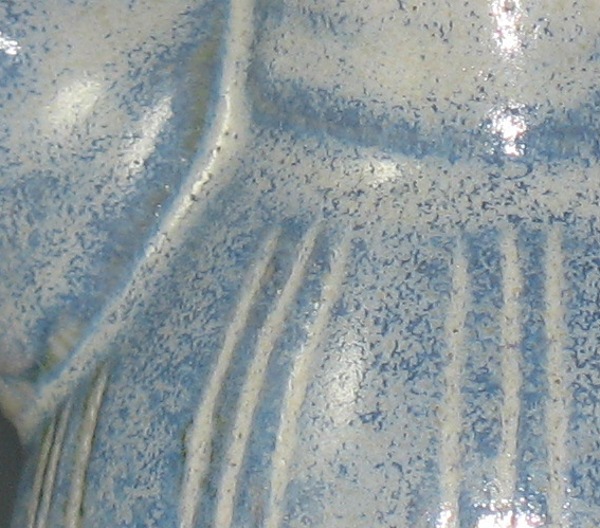
I’ve mentioned before that major sources of inspiration for me are the pipes made by many ancient cultures, and especially the pipes made by pre-Columbian Americans.
 There is a rich tradition of pipe making that predates the European invasion of the New World. As a kid, I was lucky enough to go out into the deserts of the Texas panhandle and New Mexico, looking for points and bits of pottery. We never did any digging; we only picked up surface relics, and we were never lucky enough to find a pipe. But I still felt a strong connection to the people of the past, both from our visits to the places where they lived, and through my genetic heritage. (My father was part Cherokee, and came from Apache, Oklahoma.)
There is a rich tradition of pipe making that predates the European invasion of the New World. As a kid, I was lucky enough to go out into the deserts of the Texas panhandle and New Mexico, looking for points and bits of pottery. We never did any digging; we only picked up surface relics, and we were never lucky enough to find a pipe. But I still felt a strong connection to the people of the past, both from our visits to the places where they lived, and through my genetic heritage. (My father was part Cherokee, and came from Apache, Oklahoma.)
When I was a young potter, this connection was unconscious at best, since I was making pipes that were purely functional, without any of the spiritual aspects that typified early American examples of the craft. But in the 40 years since then, I’ve come to regard the work of these unknown, long dead pipe makers with a substantial degree of reverence.
I’m pretty sure that these pipes were used mostly in a ritual mode, rather than a self-indulgent hedonistic mode. 
I hope that by making pipes that are as beautiful and as contemplative as possible, I can in some small measure return the ancient craft to a semblance of its former glory. Of course, I am using high-fired porcelain and glazes inspired by ancient Chinese potters to make these statements, not the earthenware used by ancient Americans. Even worse, I’m using the potter’s wheel, a device unknown in pre-Columbian America. But these were pragmatic choices. I’m not interested in creating replica pipes. As an artist, I want to make objects that haven’t been seen before, to the greatest extent possible.
I can’t hope to create pipes as magnificent as these, driven as they are by centuries of tradition and religious faith, and given the gravitas of great age.
But I can do my best to carry on the craft.
——————————–
I am using images from public sources, under the belief that fair use applies. But if the owners of these images object to their use here, please let me know and I will remove them immediately. Also, some of these may be stone pipes, but I think the imagery here is more important than the material.
[contact-form][contact-field label=’Name’ type=’name’ required=’1’/][contact-field label=’Email’ type=’email’ required=’1’/][contact-field label=’Website’ type=’url’/][contact-field label=’Comment’ type=’textarea’ required=’1’/][/contact-form]




















